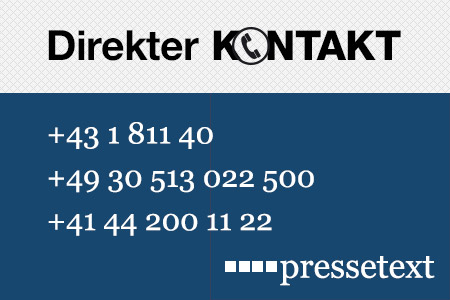Learning from practice using registry studies
Top-calibre Danish research at European Neurology Congress
Copenhagen (ptp025/30.05.2016/12:45) More than 6,000 participants, 1,547 accepted abstracts with a total of 6,555 authors, 82 scientific sessions and 362 invited speakers: This is a summary in figures of the Second Congress of the European Academy of Neurology (EAN) being held in Copenhagen from 28 to 31 May 2016. Prof Mads Henrik Ravnborg, President of the Danish Neurological Society: "We view the fact that the European Academy of Neurology Congress is being held in Denmark this year as an acknowledgement of our scientific work. Not only do Denmark and the Scandinavian countries in general have a long tradition of excellent neurological research, they are also currently making important scientific contributions to European neurology and have a highly active neurological research community. This is crystal clear from the more than 100 abstracts that will be presented at the Congress by Danish researchers alone."
One area in which Danish neurology has an especially strong position involves its large volumes of registry data. Prof Ravnborg: "Studies based on systematically collected registry data are of major value. Unlike clinical studies, which are conducted under strictly defined conditions, registries reflect medical practice with all its irregularities. The strengths and weaknesses of therapies are therefore rendered visible with exceptional clarity. For this reason, these studies contribute greatly to the safety of patients. We are definitely among the European frontrunners in several areas with respect to the breadth of neurological indications for which we have registry data."
Numerous analyses of data from Danish registries are being presented at the EAN Congress in Copenhagen. One is a large-scale cohort study from Aarhus, which focuses on the cognitive abilities of children whose mothers took antiepileptic drugs while pregnant with them. Data on 479,021 children was evaluated with an eye to determining their performance on the National Tests, an academic test taken by all students in Danish Public Schools. On the whole, the children whose mothers took antiepileptic drugs while pregnant with them performed worse. The weaknesses were most evident in cases in which the mothers took valproate, likewise significant if somewhat less evident, in cases in which they took clonazepam.
Prof Ravnborg commented on the data as follows: "A continuation of antiepileptic therapy during a pregnancy is important for the health of the mother and the child. Nonetheless, these results also show us how vital it is that affected women plan their desire to have children in close consultation with the neurologist treating them and that they agree with their neurologist on therapy management best suited to their situation."
The EAN Congress also devoted attention to the findings of a study from Odense, Denmark. It investigated a possible association reported in earlier studies between migraine with aura (MA), white matter hyperintensities (WMH, i.e. white matter damage in the brain associated with cognitive impairment and stroke) and the occurrence of silent brain infarcts, i.e. strokes that do not have the typical outward symptoms associated with stroke. The study investigated female twins aged 30 to 60 with and without migraines with aura. MRIs were employed to determine the occurrence of any silent strokes and of WMH.
Prof Ravnborg: "The study was unable to find any connection between migraines with aura and the presence of damage to white matter in the brain. A series of studies over the last 10 to 20 years has claimed that migraine patients with aura have an increased risk of small infarcts in the WM. The present study definitively degrades this theory. For migraine patients this is a considerable relief. Likewise, neurologists should consider a thorough diagnostic work-up to identify other reasons if significant WMH are found in migraine patients."
Among the Danish studies that were presented at the EAN Congress is also a first run: A group of researchers of Aarhus University conducted the first nationwide register-based study of Charcot-Marie-Tooth Disease (CMT), and the first to report estimates of incidence and mortality. CMT is the most common inherited neurological disease. The main symptoms consist in an increasing weakness of hands and feet which gradually spreads into arms and legs, leading to significant disability. The study shows an incidence of 0.76 cases per 100,000 population. The average age of death in CMT patients was 70 years, significantly earlier than in the general Danish population.
Prof Ravnborg: "This study is an example of the power of population based health registries at its best. Prior to this study the prognosis of CMT has been based on assumptions rather than scientific data. I am deeply worried that today's politically decided reinforcements of data privacy laws will undermine our unique access to health data that are otherwise unobtainable and of great value for the society."
(end)| Aussender: | Bettschart & Kofler Kommunikationsberatungs GesmbH |
| Ansprechpartner: | Dr. Birgit Kofler |
| Tel.: | +49-172 7949286 |
| E-Mail: | kofler@bkkommunikation.com |
| Website: | www.bkkommunikation.com |


